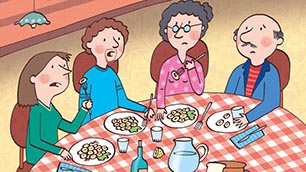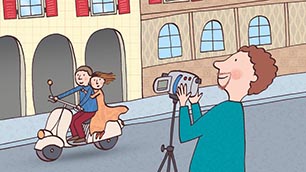I. Personal Pronouns: The Combined Forms
When a verb has both a direct and indirect object pronoun, it has a combined pronoun form in Italian (pronomi doppi). An example of a sentence that uses both a direct and indirect object in English would be: She sells it to her. In this case, it is the direct object pronoun, and to her is the indirect object.In Italian, these double pronouns have specific rules for their use together. The indirect object pronouns always precede the direct object, and the forms of the indirect object pronouns change slightly. Following is a table that shows how direct and indirect object pronouns combine.
Indirect Object Pronouns | Direct Object Pronoun | Direct Object Pronoun | Direct Object Pronoun | Direct Object Pronoun |
+lo | +la | +li | +le | |
mi | me lo | me la | me li | me le |
ti | te lo | te la | te li | te le |
gli/le/Le | glielo | gliela | glieli | gliele |
ci | ce lo | ce la | ce li | ce le |
vi | ve lo | ve la | ve li | ve le |
loro | lo ... loro (glielo) | la ... loro (gliela) | li ... loro (glieli) | le ... loro (gliele) |
NB: In contemporary Italian, the forms glielo, etc. often replace lo...loro, etc.
Examples and sentence breakdowns:
| Domani ti manderò un pacco. Tomorrow I will send you a package. |
In the above sentence, ti is the indirect object pronoun. In Italian, it can also be replaced with a te (to you). Un pacco is the direct object. This direct object can also be replaced with a pronoun. Because it is masculine and singular, that pronoun would be lo.





















